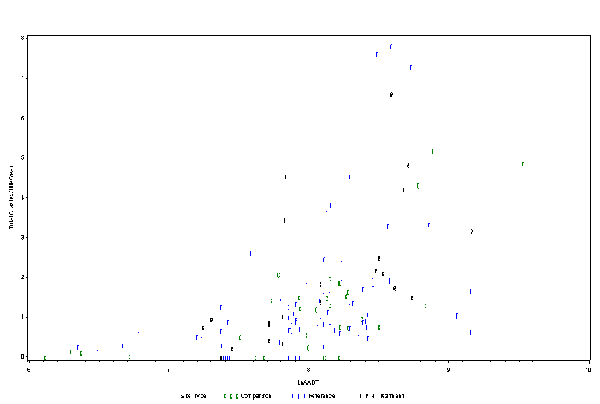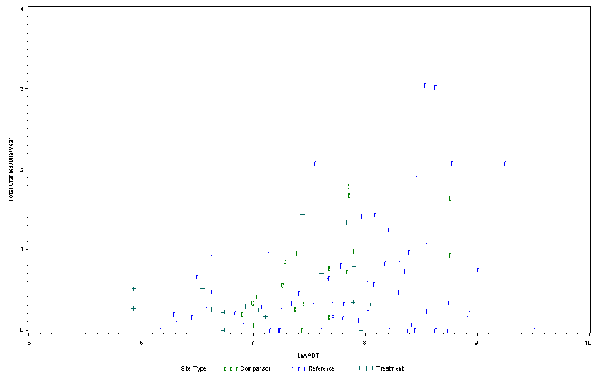Safety Evaluation of the Safety Edge Treatment
Appendix C. Scatter Plots of Accidents and AADT
Figure 12 through figure 16 are scatter plots of crashes (per mile per year) and traffic volume (log basis) that were used to determine the appropriateness of modeling assumptions. In general, these plots show a positive relationship between crashes and traffic volume (i.e., crashes increase with increasing volume). Also, distributions for comparison, treatment, and reference sites appropriately overlap each other and do not contain extreme outliers.

Figure 12. Graph. Georgia multilane roadway with paved shoulder.

Figure 13. Graph. Georgia two-lane roadway with paved shoulder.

Figure 14. Graph. Georgia two-lane roadway with unpaved shoulder.

Figure 15. Graph. Indiana two-lane roadway with paved shoulder.

Figure 16. Graph. Indiana two-lane roadway with unpaved shoulder.
|
